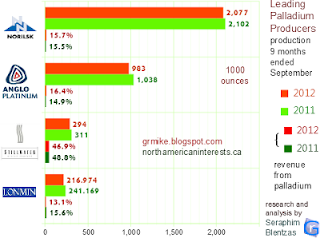Canadian Real Estate Investors Have Deep Pockets.. Makes Canadian Real Estate Market Less Risky
I'm optimistic about the Canadian real estate market, specifically commercial properties. Only 1.5 years ago, in May of 2012 Scotiabank sold Canada's second tallest building, Scotiaplaza to H&R Reit/Dundee Reit for an impressive $1.266 billion. Then, last month we learn that Canadian real estate investors have been a major driving force behind the resurgent US real estate market; between the years 2009 and 2013, Canadians outspent Americans by about $27 billion !
This year (ended August 2013) the biggest Canadian spenders south of the border were publicly traded companies ($4.6b), institutional investors ($2.3b), and private companies (1.3b).. they invested in office space ($4.2b), apartment buildings ($2.8b), and industrial complexes ($2.1b) among others. You can be sure that these companies are eyeing the Canadian market and plan to step right in if and when Canadian prices start to decline.
Bad News at BlackBerry Being Overblown Again (surprise ?)
What hurts Microsoft won't hurt BlackBerry: Unlike Microsoft, BlackBerry offers a robust operating system with the best reputation for security. What worked against MSFT won't work against BBRY. The last quarter was seriously hurt by Thorsten's for sale tag. People were confused about the future of the company, but now the situation is different the future is clear, BlackBerry is here to stay.
The media chooses to focus on only the worst news in the worst possible way !
- Either say that the company sold 1.9 million handsets or say that it lost $4.4b; The $4.4b loss takes into account 4 million devices sold.
- The adjusted loss of under $400m compares favorably to the quarterly losses Microsoft's handset business has been racking up.
- Without its cheap devices Samsung would be doing bad too (sales of high end devices plummeted at Samsung). BlackBerry just released Q5 and other low end devices which will appeal to users of the BB7 phones in developing countries.
- During this quarter (2q2014), BlackBerry had the worst kind of media attention possible, talk of the company collapsing which we now know to be false after revelations that the Chinese government was lobbying hard for Canada to permit a Lenovo takeover. Now we are seeing a turnaround with Germany, and even the US Government favoring BlackBerry over iPhone. As long as security remains a priority, BlackBerry will be a player.
- Cash equivalents up to $3.7 billion. Even without the $1 billion share issue cash down by less than half a billion. A true $4.4 billion loss would've plunged the company into bankruptcy.
- $4 billion of the $4.4 billion loss stems from structural changes + end of licensing deals made when the company was much larger + things that will not happen next year thanks to the foxconn deal.
- Under construction is a new security technology center in Washington DC. This will give BlackBerry a cosier relationship with its biggest clients - government and security agencies.
- New CEO John Chen is hiring a rebuilt sales force designed to target regulated industries, including government clients.
- Last quarter BB sold roughly half a million BB10 phones. That number can only go up since new CEO John Chen has made it his goal of lowering the price of the phones.
- Market share remains strong in the middle east. Service revenue remains strong being down by only -13% even though the number of devices sold fell at 3-4X that rate.
















